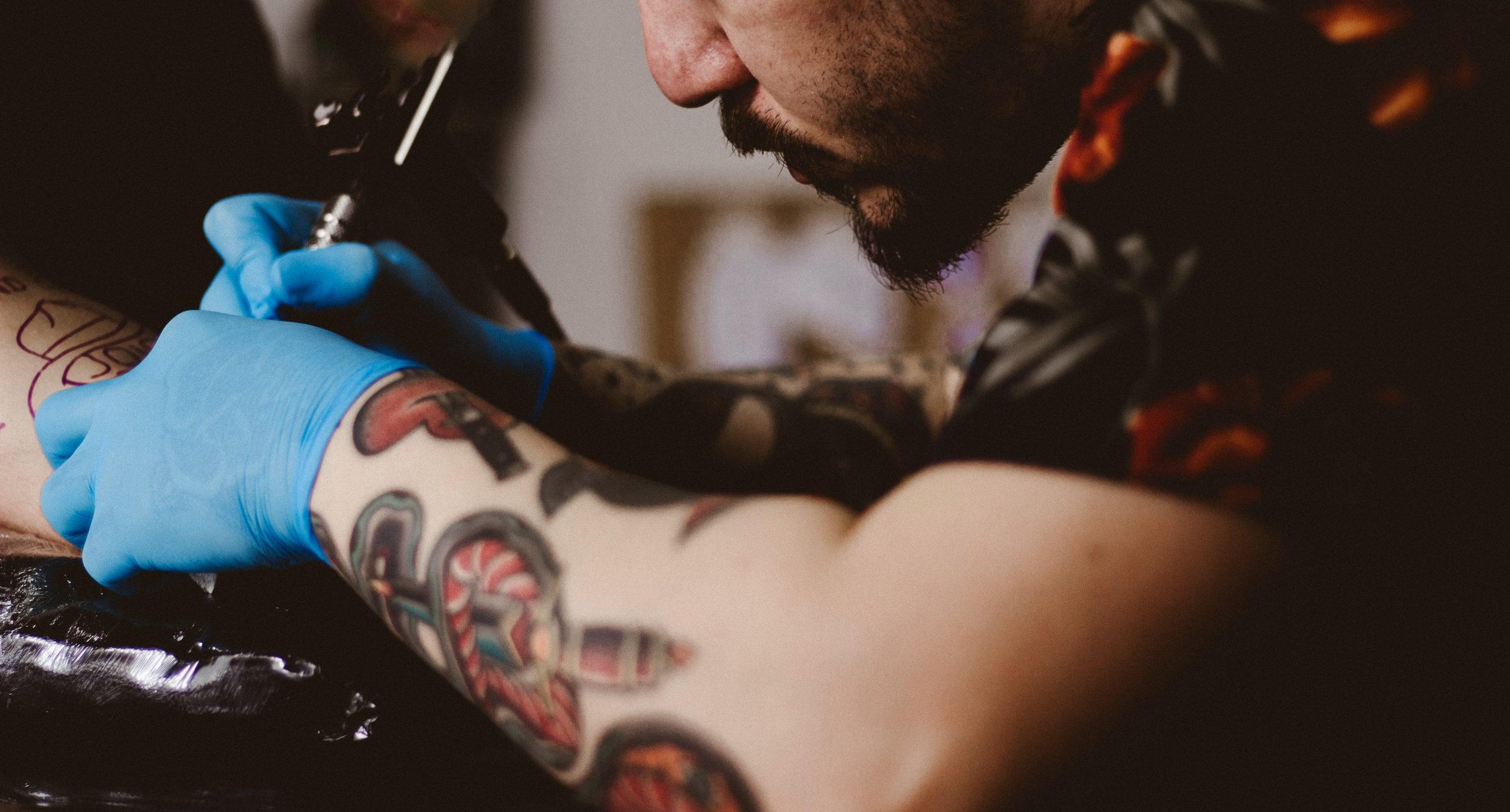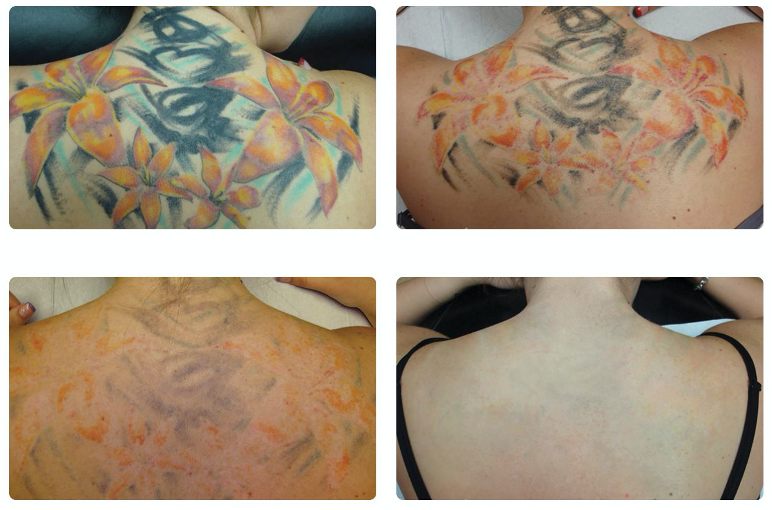Changes in our skin as we age are inevitable, including loss of moisture, changes in…

An Idiot’s Guide to Laser Tattoo Removal
Growing tired of your ink?
The unfortunate truth about tattooing is that for many of us, as we grow and change, so do our tastes and preferences.
What once seemed the height of cool quickly becomes something cheesy and outdated, and though most of us are well aware of the permanence of tattoos, that doesn’t mean we always put the required amount of thought in before we dive right in.
But that doesn’t mean all hope is lost.
Big or small, Laser Tattoo Removal is an option for removing the ink you no longer love – whether you want it gone for good, or to prepare the skin for something new. And yes, we know what you’re thinking – aren’t tattoos permanent? Surely it’s not that simple?
Well no, it’s not going to be easy, and it’s not going to be instant – but neither was getting the tattoo. If you were willing to invest in ink in the first place, then there’s no reason not to invest in removing it if you really want it gone.
So, here’s a little guide to Laser Tattoo Removal, starting at the beginning.
What is a tattoo?
A tattoo is a decorative form of body modification that involves changing the colouring of the second (dermis) layer of your skin by inserting ink, dyes or pigments via a manual or mechanised needle.
Tattooing is an art form that’s been present in many cultures across the world for hundreds of years, and in the 21st century, it’s grown more popular than ever before as techniques and products have continued to improve.
Like most things, the more you pay, the better quality product you’re likely to receive – and tattooing is no different. Good ink costs a lot, and paying an artist to design something from the ground up based on your idea takes time, energy and money. However, when it comes to tattoo removal, this can sometimes complicate things (but more on that later).
Why are tattoos permanent?
Tattoos remain more or less permanently on your skin once healed. This is because as the tattoo needle penetrates the skin, it causes damage that the body responds to.
White blood cells attempt to absorb the ink, recognising it as a foreign particle, to try and dispose of it through the bloodstream. However, the ink particles are too large for the body to deal with, and so instead, they just sit there in the dermis, unmoving.
It must be said though, certain types of light exposure can fade and blur the image if not properly protected, and sometimes this can be damaging enough that you decide you want to remove the tattoo altogether.
Changes to our body shape or changes to the skin as we age can also affect the tattoo’s appearance – particularly in older tattoos where the ink may have been injected too deeply into the skin, and the particles migrate. And then of course, sometimes, we merely make decisions we later regret. No matter your reasoning for wanting to remove your ink, the Cambridge Laser Clinic can help.
How does Laser Tattoo Removal work?
Depending on the type of tattoo, our medical practitioners will use different lasers to target the pigment in the skin and break it down, so that the particles are small enough for your body to safely remove them.
There’s no one size fits all approach the Laser Tattoo Removal – no one wavelength will work for all colours and inks, and some are more difficult to remove than others.
Our lasers target the pigments in the skin’s dermis, which absorb the laser’s light and fragment. Different lasers target different colour spectrums using different wavelengths, and since these lasers are so precise, the surrounding skin is spared from unnecessary damage.
At the Cambridge Laser Clinic, we also use forced cold air skin cooling with our treatments, which dramatically reduces the discomfort you’ll feel during the procedure.
After your first session, you may notice some immediate results – but it’s far more likely you’ll have to undergo several treatments before you see a real difference.
The number of sessions varies from person to person, depending on the size and colouration of the tattoo, and how deeply it sits in your skin. It can take from three to six weeks between sessions for your body to break down and absorb the pigment residue, and your skin must be fully healed before undergoing further treatment, in order to avoid damage.
Does it hurt?
The short answer is yes: but most patients who undergo the procedure will confidently tell you that it doesn’t hurt any more than getting the tattoo in the first place.
Some compare the feeling to having an elastic band flicked at your skin. Others have reported it’s more like being repeatedly scratched by cats. The deciding factor is you, and your personal pain tolerance.
How long does it take?
Once again, that all depends on you.
Smaller tattoos will take less time than larger ones.
Black, dark blue, brown and dark green inks are far easier to remove than light colours such as yellow, red, orange and pale blue.
The intricacy of the tattoo can also alter the time it takes, as more detailed designs will require more work. However, darker inks will seem to fade faster, though multiple sessions are required before they’re close to being removed completely.
Does it really remove the tattoo? How will it look?
After your session, you may notice some redness, swelling, blistering or bleeding for several hours or days. This is perfectly normal.
As the weeks go on, the treated area may begin to flake or peel, and scabs may develop. Although this may seem alarming and unsightly, it’s not permanent. Take care to treat the area gently while your body works hard to remove the pigment and the skin heals. Avoid the sun, anywhere you might be at risk of infection, and prolonged periods in water – your practitioner will provide you with full aftercare advice.
Once the skin has healed, you can undergo another treatment. Some colouration may remain initially, and you may require many sessions if the colours in your tattoo are particularly difficult to remove. Some colours may linger, although they’re likely to be significantly faded.
“Ghosting” can sometimes occur after tattoo removal, where your skin retains a pale white shadow of the original image – as such, speaking to a practitioner beforehand is important, as this can be more noticeable on darker skin tones.
Occasionally, some scarring may develop after the area has healed, but this should be avoidable with proper aftercare. Laser Tattoo Removal is still the safest way to remove your tattoo and is far preferable to other, more invasive, acid-based alternatives.




